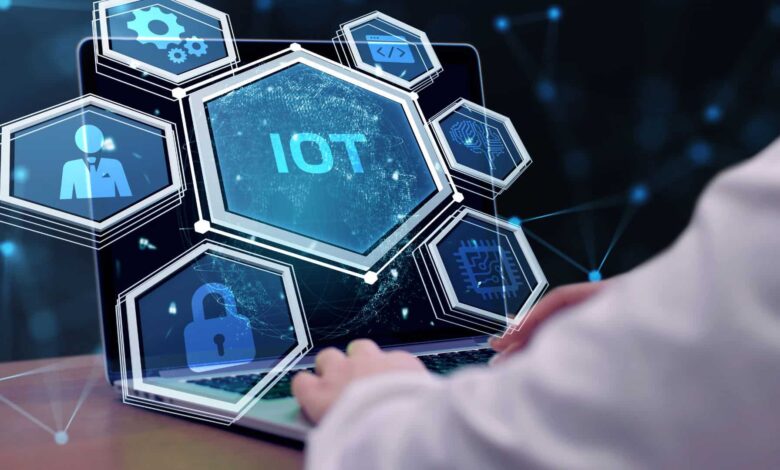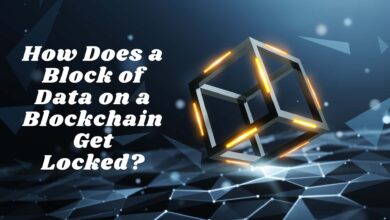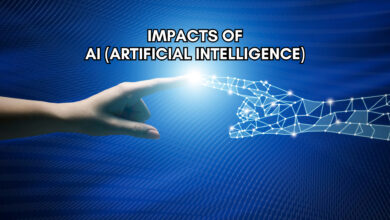The Primary Systems of IoT Technology

The Internet of Things (IoT) refers to the billions of physical devices around the world that are now connected to the internet, collecting and sharing data. IoT systems involve four primary technology systems working together:
1. Sensors/Devices
The first main component of IoT systems is the sensors and devices that collect data. This includes everything from smart home devices like smart thermostats and security cameras, to industrial sensors that monitor machinery and track inventory.
Sensors detect changes in the physical environment and convert phenomena like motion, heat, light, etc. into digital signals that can be processed by computers. IoT devices contain embedded sensors that integrate seamlessly into physical objects, buildings, vehicles and infrastructure.
Key Points on Sensors:
- IoT sensors measure data like temperature, pressure, motion, location, light, etc.
- Smart devices contain multiple embedded sensors.
- Advancements in microelectromechanical systems (MEMS) have allowed sensors to become smaller and cheaper.
- Low power wide area networks (LPWANs) allow sensors to communicate wirelessly over long distances.
2. Connectivity
The second core component of IoT systems is connectivity. This is what allows the sensors and devices to communicate and share data through the internet.
IoT connectivity involves short and long-range wireless networking technologies like WiFi, Bluetooth, cellular networks, satellites, etc. Gateways and routers connect the devices to wider area networks and ultimately the internet.
Key Points on IoT Connectivity:
- Short-range wireless (Bluetooth, WiFi) connects nearby devices.
- Cellular networks (2G, 3G, 4G, 5G) provide wide area connectivity.
- New low-power WAN tech like LoRaWAN offers long-range, low-power connectivity in rural areas.
- Gateways aggregate data from devices and connect to the internet.
- IoT devices have built-in network connectivity to communicate.
3. Data Storage and Processing
The data captured by IoT devices needs to be securely stored and processed. This is handled in the cloud by IoT platforms.
IoT platforms provide capabilities like device management, data collection, storage, analytics, dashboards, etc. The platforms allow users to view, analyze and act on data from IoT devices in real-time.
Key Points on IoT Data Management:
- Cloud-based IoT platforms manage connectivity, data, and devices.
- Platforms allow remote monitoring, analytics, dashboards, and control of devices.
- Machine learning can be applied to detect patterns and predict failures.
- Data lakes and data warehouses store massive amounts of IoT data.
- Blockchain emerging for secure IoT data sharing between parties.
4. User Interface
The final component of IoT ecosystems is the user interface. This is how humans interact with and control the IoT system.
Interfaces include dashboards that visualize data insights, mobile/web apps to monitor devices and alerts, voice assistants that allow voice control, and augmented reality interfaces for industrial settings.
Key Points on IoT User Interfaces:
- Web and mobile dashboards allow the monitoring of IoT devices and data.
- Apps control IoT devices like smart home systems, appliances etc.
- Voice assistants like Alexa allow voice control over IoT devices.
- AR glasses and headsets display data and alerts in industrial IoT settings.
- Automation rules can trigger actions based on sensor data.
IoT Technology System Interactions
These four IoT systems work together to deliver actionable insights:
- Sensors detect events and collect data.
- Connectivity networks transmit sensor data to the cloud.
- Cloud platforms process and analyze data from devices.
- Interfaces present insights and enable users to control devices.
Optimization of each layer and their interplay is key to building effective IoT systems.
Frequently Asked Questions About Primary IoT Systems
What are the key components of an IoT system?
The four core components of IoT systems are:
- Sensors and Devices
- Connectivity
- Data Processing/Cloud Platforms
- User Interfaces
These work together to collect data, connect devices, derive insights, and enable control.
What connectivity protocols are used in IoT?
Common IoT wireless protocols include:
- WiFi – For connecting nearby devices
- Bluetooth/BLE – Short-range wireless
- Cellular – 2G, 3G, 4G, 5G networks
- LoRaWAN – Long range, low power wide area networks
- Zigbee – Mesh networks for home/building automation
Wired networks like Ethernet are also used. Gateways aggregate and connect data to the cloud.
How are IoT devices managed?
IoT platforms provide remote device management capabilities including:
- Provisioning and authentication
- Monitoring device status -Updating firmware and configurations
- Monitoring power/battery levels
- Rebooting devices remotely
- Decommissioning devices
This allows centralized management of millions of deployed IoT devices.
How is data analyzed in IoT systems?
IoT platforms apply analytics like:
- Descriptive analytics – aggregate, report on data
- Diagnostic analytics – analyze root causes from data
- Predictive analytics – identify patterns and anomalies
- Prescriptive analytics – recommend actions based on data
Machine learning algorithms are used to gain insights from IoT device data.
How do users interact with IoT systems?
- Dashboards display metrics and insights from IoT data.
- Mobile and web apps allow monitoring devices.
- Voice assistants enable voice commands to control devices.
- Augmented reality displays real-time data/alerts in industrial settings.
- APIs allow integration with third-party apps.
Interfaces enable users to monitor and control devices based on IoT data.
Real-World Examples of IoT Systems
IoT technology has a wide range of applications across industries. Here are some examples of IoT systems using the four core components:
Smart Home
- Sensors: Smart thermostats, security cameras, motion sensors, smart appliances.
- Connectivity: Home WiFi, Bluetooth, Zigbee.
- Platform: Smart home hub processes data locally and in the cloud.
- Interface: Mobile app and voice assistants to control devices.
Industrial IoT
- Sensors: Sensors monitor production lines and heavy machinery.
- Connectivity: WiFi, cellular networks.
- Platform: The cloud platform analyzes sensor data for insights.
- Interface: Dashboards and augmented reality displays for plant operators.
Supply Chain/Logistics
- Sensors: GPS trackers on trucks/containers, temperature sensors, etc.
- Connectivity: Cellular networks, satellite.
- Platform: The cloud platform tracks assets and monitors conditions.
- Interface: Web/mobile app shows the location, and condition of assets.
Smart Cities
- Sensors: Environmental sensors, traffic cameras, waste management sensors.
- Connectivity: LoRaWAN, NB-IoT, Sigfox networks.
- Platform: The cloud platform monitors city infrastructure.
- Interface: Dashboards for city departments to monitor services.
Key Benefits of IoT Systems
Some top benefits that comprehensive IoT systems can provide:
- Data-driven insights – Make smarter decisions based on real-time data.
- Increased automation – Use insights from data to automate tasks and processes.
- Enhanced operations – Improve operational efficiency, and reduce downtime.
- New revenue models – Generate new revenue streams from connected products/services.
- Proactive maintenance – Predict failures before they occur.
- Innovation – Build innovative IoT-enabled products/services.
Conclusion
In summary, IoT systems are powered by the orchestration of sensors, connectivity, data processing platforms and user interfaces. Optimization of these layers can enable organizations to leverage IoT technology for smarter decision-making, increased automation, and innovative products and services. The future points towards ubiquitous connectivity of everyday physical objects through largely invisible IoT systems built into our environments.





